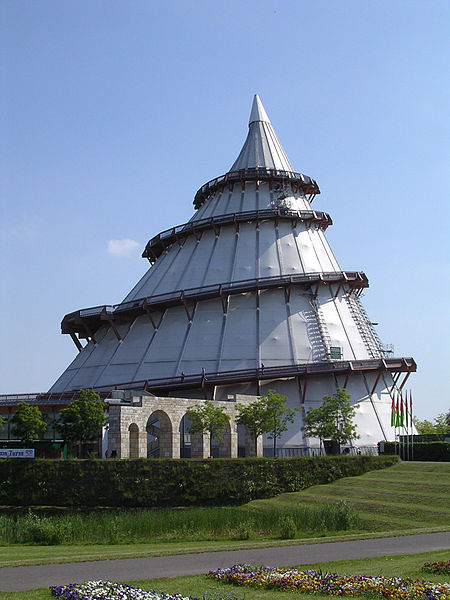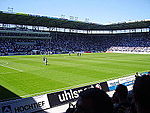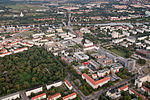Jahrtausendturm
1999 establishments in GermanyBuildings and structures celebrating the third millenniumBuildings and structures in MagdeburgTourist attractions in MagdeburgTowers completed in 1999 ... and 1 more
Towers in Germany

Jahrtausendturm (German: millennium tower) is, at 60 metres (200 ft), one of the highest wooden towers in the world. It was established on the occasion of the Bundesgartenschau 1999 in the Magdeburger Elbauenpark in Magdeburg, Germany. The tower houses an exhibition on the development of sciences, which is supported by many descriptive experiments with which the visitor can interact. One notable example is a powerful telescope through which visitors can observe the distant clock-face on the Magdeburger cathedral.
Excerpt from the Wikipedia article Jahrtausendturm (License: CC BY-SA 3.0, Authors, Images).Jahrtausendturm
Magdeburg Herrenkrug
Geographical coordinates (GPS) Address Nearby Places Show on map
Geographical coordinates (GPS)
| Latitude | Longitude |
|---|---|
| N 52.138 ° | E 11.667 ° |
Address
39114 Magdeburg, Herrenkrug
Saxony-Anhalt, Germany
Open on Google Maps









